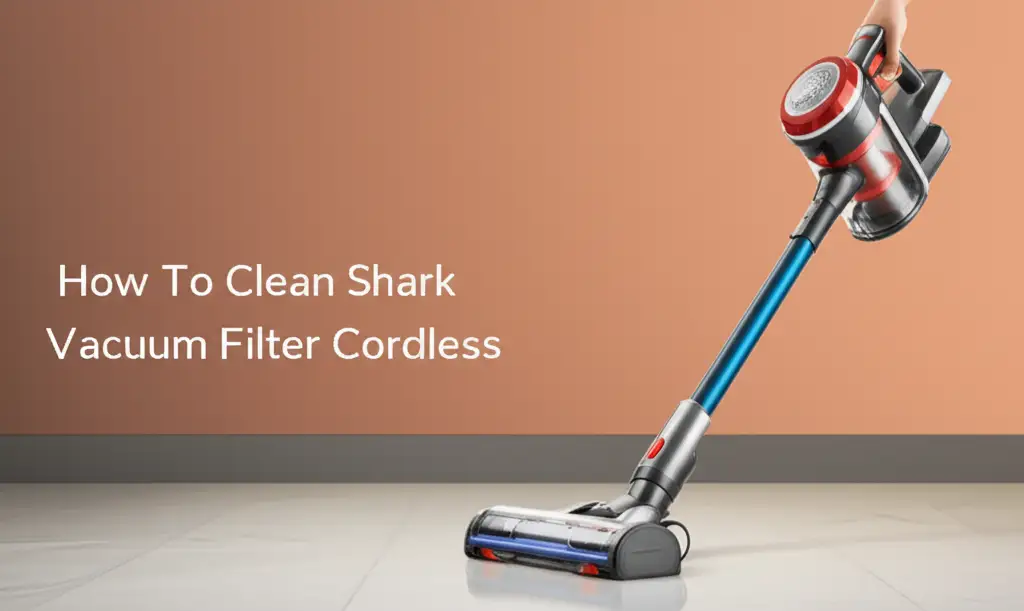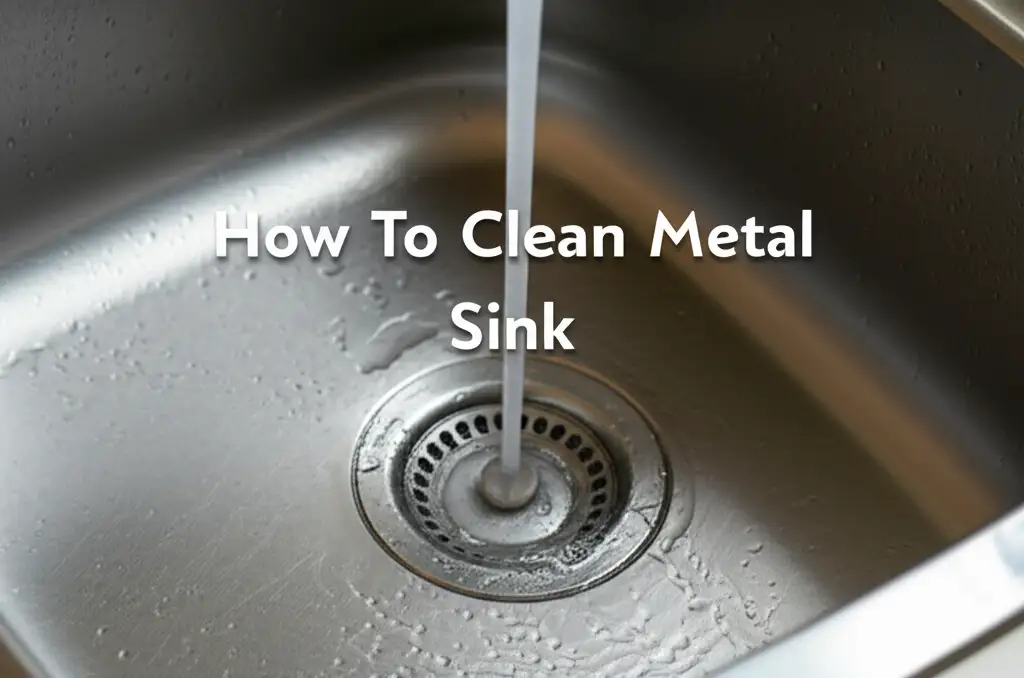· Home Cleaning · 15 min read
How To Clean Shark Vacuum Filter Cordless

Restore Suction: How to Clean Your Shark Cordless Vacuum Filter
Has your powerful Shark cordless vacuum started losing its famous suction? A common culprit is often a dirty filter. Over time, these filters trap dust, debris, and allergens, which can choke your vacuum’s motor and reduce its cleaning power. Learning how to clean Shark vacuum filter cordless models properly is essential for maintaining peak performance.
Keeping your Shark vacuum’s filters clean helps it run like new. This extends the life of your appliance and ensures it effectively cleans your home. This guide covers why filter cleaning is important, what tools you need, and a simple step-by-step process. You will learn how to make your Shark cordless vacuum perform at its best again.
Takeaway
- Regularly clean your Shark cordless vacuum filters to maintain strong suction.
- Separate foam/felt filters from HEPA filters for different cleaning methods.
- Always allow filters to air dry completely for at least 24 hours before reinserting.
- Replace filters every 3-6 months or as needed for optimal performance.
Quick Answer
To clean a Shark cordless vacuum filter, remove the filters (foam, felt, and HEPA). Tap the HEPA filter to remove loose dirt. Wash foam and felt filters with lukewarm water until the water runs clear. Squeeze out excess water gently. Let all filters air dry completely for at least 24 hours before putting them back into your vacuum.
Understanding Your Shark Cordless Vacuum Filters
Shark cordless vacuums use different types of filters. Each filter plays a unique role in trapping dust and improving air quality. Knowing these filters helps you clean them correctly. Most Shark cordless models feature foam filters, felt filters, and a HEPA filter.
The foam and felt filters are often found together, located near the dust cup. They capture larger dust particles and pet hair. This prevents them from reaching the motor. These filters are usually washable and designed for frequent cleaning.
The HEPA filter, or High-Efficiency Particulate Air filter, is critical for allergy sufferers. It captures 99.97% of particles 0.3 microns or larger. This includes pollen, pet dander, and dust mites. This filter is usually located in a separate compartment, often near the motor or exhaust. It is typically not washable and requires different care.
Each filter type needs specific attention. Ignoring any filter can impact your vacuum’s suction and air filtration. Proper maintenance ensures your Shark vacuum effectively removes allergens from your home. This keeps your air cleaner and your vacuum running smoothly.
Why Cleaning Your Shark Vacuum Filter is Essential
Cleaning your Shark cordless vacuum filter is not just about keeping things tidy. It directly impacts your vacuum’s performance. A dirty filter blocks airflow, causing the motor to work harder. This leads to reduced suction power and inefficient cleaning.
When filters are clogged, the vacuum cannot pull air through properly. This means dirt and debris remain on your floors. You will notice your vacuum is not picking up messes as well as it used to. This makes cleaning jobs take longer and require more effort.
A strained motor can also overheat. This shortens the lifespan of your expensive appliance. Regular filter cleaning prevents this stress, keeping your motor cool and extending its life. It saves you money on costly repairs or replacements down the line.
Dirty filters also affect the air quality in your home. They can release trapped dust and allergens back into the air you breathe. This is especially true if the filters are overloaded. Cleaning them regularly ensures your vacuum is trapping particles effectively. This keeps your indoor air cleaner and healthier for everyone. Just as you maintain other home appliances, like cleaning your window AC unit filter to ensure efficient cooling and air quality, maintaining your vacuum’s filters is crucial for similar reasons.
Gathering Your Tools: What You Need for Filter Cleaning
Before you begin cleaning your Shark cordless vacuum filter, gather a few simple supplies. Having everything ready makes the process smooth and efficient. You probably have most of these items already in your home. This list ensures you are prepared for a thorough filter cleaning session.
First, you will need access to a sink or a basin with lukewarm running water. This is for rinsing the foam and felt filters. Avoid using hot water, as it can damage the filter material over time. Lukewarm water is gentle yet effective for rinsing away dirt.
Next, have a soft brush or an old toothbrush handy. This helps to gently scrub away stubborn dirt from the filters. Do not use abrasive brushes or harsh scrubbers. These can tear or damage the delicate filter material. A soft brush removes caked-on dust without harming the filter’s integrity.
You will also need a clean towel or paper towels. These are for blotting excess water from the washed filters. This speeds up the drying process slightly. Do not twist or wring the filters aggressively, as this can distort their shape. Just gently pat them dry.
Finally, ensure you have a well-ventilated area for drying. This could be outdoors on a sunny day or indoors near a fan. Filters need to air dry completely, which can take up to 24 hours. Placing them in direct sunlight or using a fan helps ensure all moisture evaporates. Proper drying prevents mold growth and bad odors.
Step-by-Step Guide: Cleaning Foam and Felt Filters
Cleaning the foam and felt filters in your Shark cordless vacuum is a straightforward process. These are the most common filters and require regular washing. Follow these steps to restore their efficiency and your vacuum’s suction power. Always ensure your vacuum is unplugged or the battery is removed before starting.
First, locate the filter housing, which is usually near the dust cup. Gently pull out the foam and felt filters. They often stack together, with the felt filter sometimes nestled inside the foam one. Note how they fit together so you can reassemble them correctly later.
Once removed, tap the filters over a trash can to shake off loose dust and debris. You will be surprised how much dirt comes off. This initial step helps prevent clogging your sink. It also makes the washing process easier and more effective.
Next, place the foam and felt filters under lukewarm running water. Squeeze them gently to allow water to penetrate and flush out trapped dirt. Continue rinsing and squeezing until the water runs clear. You might see the water turn very murky at first, which is normal. Keep rinsing until all visible dirt is gone.
After rinsing, gently squeeze out as much excess water as possible. Do not wring or twist the filters forcefully, as this can tear them. Lay them flat on a clean towel or paper towels. Allow them to air dry completely for at least 24 hours. Placing them near a fan or in a well-ventilated area can speed up drying. Ensure they are bone dry before putting them back in the vacuum. Using damp filters can damage your vacuum’s motor and cause mold growth. For maintaining other home appliances, a similar approach to careful handling is important, such as when you clean a Whirlpool Cabrio washer filter.
Handling HEPA Filters: Specific Cleaning Instructions
The HEPA filter in your Shark cordless vacuum requires different care than the foam and felt filters. HEPA filters are designed to trap microscopic particles, and washing them can damage their delicate structure. Proper handling ensures their effectiveness and longevity. Always check your specific Shark model’s manual for exact HEPA filter location and care instructions.
Most Shark cordless vacuums have a HEPA filter located separately, often in a compartment below or behind the dust cup. To access it, you may need to open a latch or twist a cover. Once you find it, gently pull the HEPA filter out. It often looks like a pleated paper filter within a plastic frame.
Unlike foam and felt filters, you should never wash a HEPA filter with water. Water can destroy the filter’s fine fibers, making it ineffective. Instead, hold the HEPA filter over a trash can and tap it firmly to dislodge trapped dust and debris. You can also use a soft brush or a dry cloth to gently brush away surface dust. Be careful not to damage the pleats.
If tapping does not remove enough dust, you can try using a handheld vacuum or the hose attachment of another vacuum on a low setting. Gently vacuum the surface of the HEPA filter to pull out embedded particles. This helps clear the filter without damaging its structure. Do not use compressed air, as it can force particles deeper into the filter or damage the filter material.
HEPA filters have a limited lifespan and cannot be completely cleaned like washable filters. Shark recommends replacing your HEPA filter every 6 to 12 months, or sooner if you notice a significant decrease in suction despite cleaning other filters. Regularly inspecting and replacing your HEPA filter is crucial for maintaining your vacuum’s air filtration capabilities. Just like you might replace an air filter on a lawn mower to ensure engine performance, replacing your HEPA filter ensures your vacuum performs optimally.
Reassembling and Testing Your Shark Vacuum
After carefully cleaning and completely drying your Shark cordless vacuum filters, it is time to put everything back together. Proper reassembly is key to ensuring your vacuum operates safely and efficiently. Rushing this step or putting damp filters back can cause serious damage to your vacuum’s motor and overall performance.
First, double-check that all your filters are bone dry. This is critical. Even a slightly damp filter can lead to mold growth inside your vacuum. It can also cause electrical problems or damage the motor. Place each filter on a clean, dry surface to ensure complete dryness.
Next, reinsert the foam and felt filters into their designated slots near the dust cup. Remember how they were stacked when you removed them. The felt filter usually sits first, then the foam filter on top. Ensure they fit snugly without any gaps. These filters often have specific orientations, so align them correctly.
Then, place the HEPA filter back into its separate compartment. Make sure it clicks into place securely. This prevents air from bypassing the filter, which would reduce its effectiveness. Close any covers or latches you opened to access the HEPA filter.
Finally, reattach the dust cup and any other parts you removed during the cleaning process. Ensure all components are securely locked into place. Turn on your Shark cordless vacuum to test its suction power. You should notice a significant improvement in airflow and cleaning ability. If the suction is still weak, double-check all filters are dry and correctly inserted. Sometimes, other parts like the brush roll might also need cleaning for full suction restoration. You can find more information on how to clean brush roll on Shark Navigator if you suspect issues there too.
Troubleshooting Common Filter-Related Issues
Even after cleaning your Shark cordless vacuum filters, you might encounter some issues. These problems often indicate something is still not quite right with the filters or other vacuum components. Knowing how to troubleshoot these common issues helps restore your vacuum’s performance. You can quickly get back to effective cleaning.
If your vacuum still has low suction after filter cleaning, first check if the filters are completely dry. Damp filters can severely restrict airflow. Re-remove them and let them air dry for another 24 hours. Also, ensure all filters are properly seated. Misaligned filters allow air to bypass them, reducing suction.
Another common issue is an unpleasant odor coming from the vacuum. This usually means moisture was trapped in the filters or dust cup, leading to mold or mildew growth. If your washable filters develop an odor, re-wash them thoroughly and ensure they dry completely in a well-ventilated area, possibly with a fan. If the odor persists, especially from a non-washable HEPA filter, it might be time for a replacement.
Sometimes, new filters can feel stiff or less flexible. This is normal. Over time, they will break in. However, if a filter tears or shows signs of damage after cleaning, it needs replacement. Damaged filters cannot effectively trap particles. They can also allow dirt to reach and damage the motor. Regularly inspect your filters for any rips or holes.
If cleaning filters does not solve your suction problem, consider other parts of the vacuum. The hose or nozzle might be clogged. The brush roll could be tangled with hair or debris. Just like a washing machine filter can cause problems if neglected, as seen when you clean a Samsung washing machine filter top loader, other components of your vacuum also need attention. A comprehensive check ensures your entire vacuum system is free from obstructions.
Maintenance Tips to Extend Filter Life and Vacuum Performance
Keeping your Shark cordless vacuum performing at its peak involves more than just occasional deep cleaning. Regular maintenance habits significantly extend the life of your filters and your vacuum itself. These simple tips save you money on replacements and ensure consistent cleaning power. Incorporating these into your routine makes a big difference.
First, establish a consistent cleaning schedule for your foam and felt filters. For average use, washing them once a month is a good starting point. If you have pets or use your vacuum frequently, you might need to clean them every two weeks. Regular cleaning prevents extreme dirt buildup. This makes each cleaning session easier and more effective.
Always empty your dust cup after every use, or when it reaches the “max fill” line. An overfilled dust cup forces more debris into the filters, clogging them faster. This also reduces suction and puts unnecessary strain on the motor. Emptying it frequently helps keep the filters cleaner for longer.
Avoid vacuuming fine powders like drywall dust, ashes, or large amounts of very fine dirt. These materials can quickly clog filters and are harder to remove. They might even damage the filter material. For such messes, it is better to use a shop vac or a broom. This prevents premature filter wear.
Store your Shark cordless vacuum in a clean, dry place. Extreme temperatures or humidity can affect filter materials. Damp environments can encourage mold growth, especially if filters were not completely dry. Proper storage protects both your vacuum and its filters from environmental damage.
Lastly, inspect your filters regularly for wear and tear. Even with proper cleaning, filters degrade over time. If you notice a tear, excessive thinning, or if they just do not clean up well anymore, it is time for a replacement. Shark recommends replacing foam and felt filters every 3-6 months and HEPA filters every 6-12 months. Following these simple steps will ensure your Shark vacuum continues to deliver powerful cleaning for years to come.
FAQ Section
How often should I clean my Shark cordless vacuum filters?
For optimal performance, clean your foam and felt filters monthly. If you have pets or use your vacuum frequently, clean them every two weeks. The HEPA filter needs tapping clean every month and replacement every 6-12 months. Regular cleaning prevents suction loss and extends vacuum life.
Can I put my Shark vacuum filters in the washing machine or dishwasher?
No, never put your Shark vacuum filters in a washing machine or dishwasher. The harsh detergents and agitation can damage the filter material. Always hand wash foam and felt filters with lukewarm water. HEPA filters should only be tapped clean, never washed.
What if my filters still smell bad after cleaning?
A persistent bad smell usually means moisture trapped in the filter led to mold or mildew. Re-wash the foam and felt filters thoroughly and ensure they air dry completely for at least 24-48 hours in a well-ventilated area. If the HEPA filter smells, it is likely time to replace it, as it cannot be washed.
How long does it take for Shark vacuum filters to dry?
Shark vacuum foam and felt filters must air dry completely for at least 24 hours. It can take up to 48 hours depending on humidity and ventilation. Never place them in a dryer or use a heat source. Ensure they are bone dry before reinserting to prevent mold and vacuum damage.
Do I need to replace Shark vacuum filters, or can I just clean them?
You need to do both. While regular cleaning maintains performance, filters degrade over time. Shark recommends replacing foam and felt filters every 3-6 months. Replace the HEPA filter every 6-12 months. This ensures peak filtration and suction power.
Can I use soap to clean my Shark vacuum filters?
Only use plain lukewarm water to clean foam and felt filters. Avoid using soap, detergent, or cleaning solutions. These products can leave residue that clogs the filter pores or damages the material. Always rinse thoroughly until the water runs clear.
Conclusion
Cleaning your Shark cordless vacuum filter is a simple yet crucial maintenance task. It directly impacts your vacuum’s suction power, lifespan, and the air quality in your home. By regularly cleaning the foam and felt filters and properly maintaining the HEPA filter, you can ensure your Shark vacuum continues to perform at its best. This guide provided clear steps and essential tips to help you keep your filters clean and your vacuum running efficiently.
Remember, a little routine care goes a long way in preserving your investment. Dirty filters are the primary cause of reduced suction and vacuum strain. Make filter cleaning a regular part of your home cleaning routine. Your Shark cordless vacuum will reward you with consistent, powerful cleaning results for years to come. Start cleaning your filters today and experience the difference!
- Shark vacuum cleaning
- cordless vacuum maintenance
- vacuum filter care
- home cleaning tips
- HEPA filter




